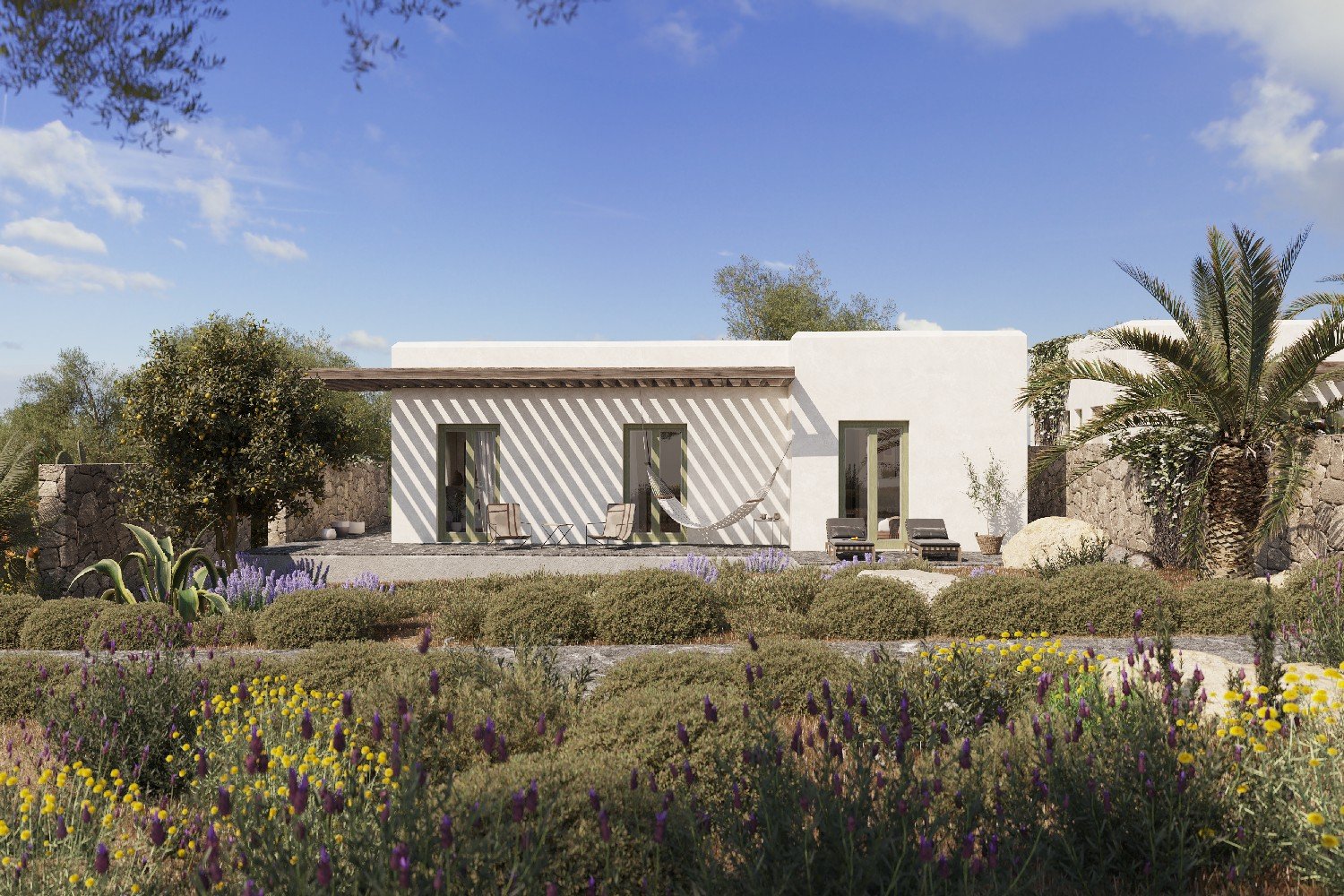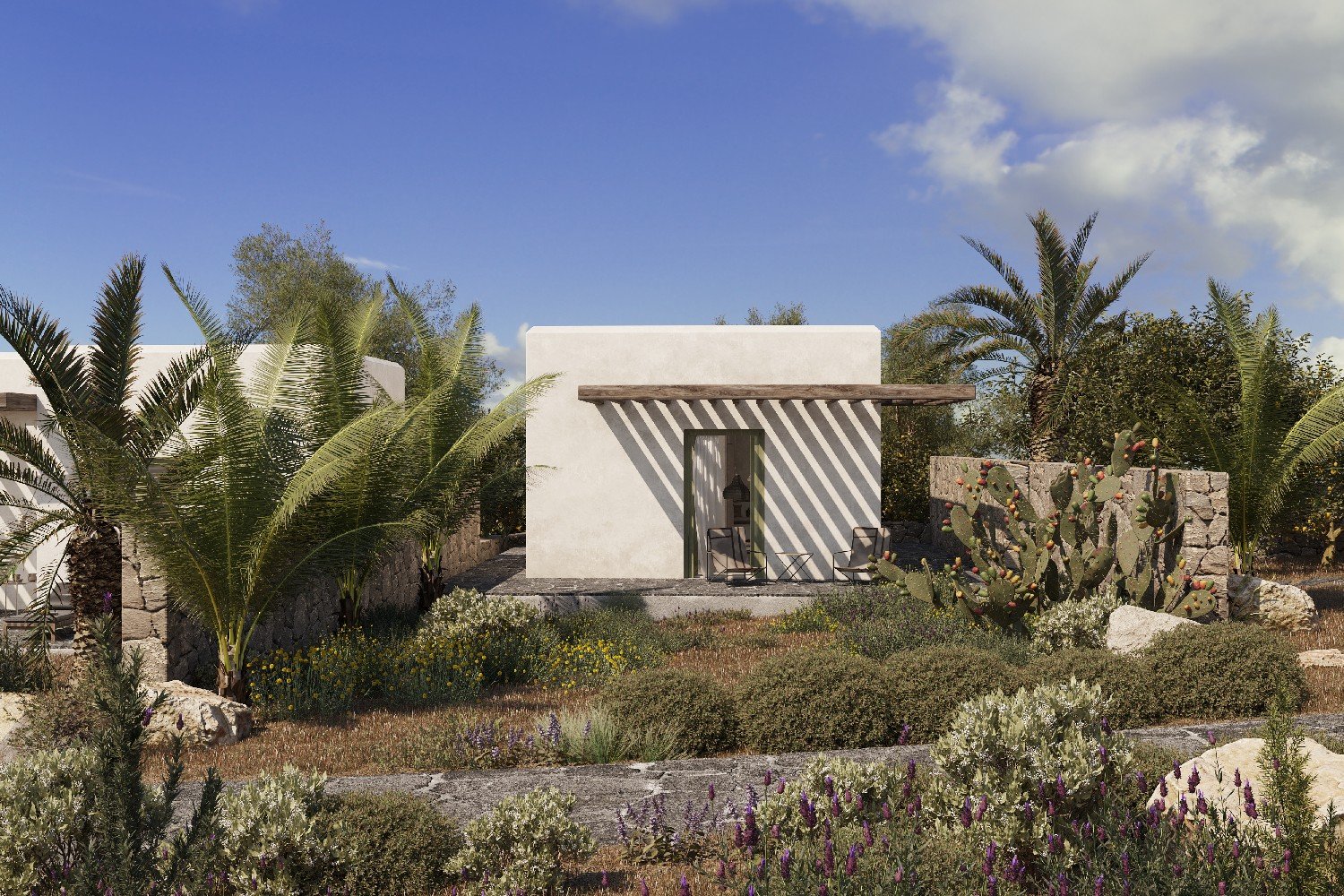The four existing buildings of the plot, located in a protected Nature 2000 Zone, are proposed to form three autonomous vacation houses. The construction of pergolas, in contact with the building volumes, creates suitable conditions for shading and thermal comfort for the residents, while functioning as a shading and thermal insulation mechanism for the buildings themselves. Aside this, pergolas provide ideal conditions for climbing plants such as bougainvillea and jasmine.
Among the buildings, due to privacy reasons and protection from the north winds, traditional dry stone structures of 1.50m height from the final existing level will be introduced. The perimeter fencing walls of the property will have a maximum height of 1.20m and will follow the natural relief of the area.
The interventions in the open areas of the field can be analysed in four main axes, those of the paths, the plantings, the coating of the existing hard surfaces with stone and the extension of a part of the hard surface in a part of the field. None of these interventions will be conducted with the use of concrete.
A central path for the free passage of pedestrians has been studied, which is in a curved shape, thus creating a pleasant route through the plantations. The path will be constructed in the traditional paved fashion, connecting the entrance with the individual houses. All existing hard surfaces which are made of concrete will be repaired and lined with a suitable, irregularly shaped stone.
In terms of vegetation enrichment, the proposal features two main planting pockets: the olive grove, which grows on the south side of the plot near the entrance, and the orange grove, which grows in the area between the buildings. Other proposed plantings include both low creeping vegetation that suits and endures the climate of the island and will offer aroma and color almost all months of the year (lavender, rosemary, oregano, thyme, sage, fennel, fennel, etc.) and taller trees (figs - date palms) or cacti plants (prickly pears) all included in the Parian flora.
Visualisation: Studio Katrakis










